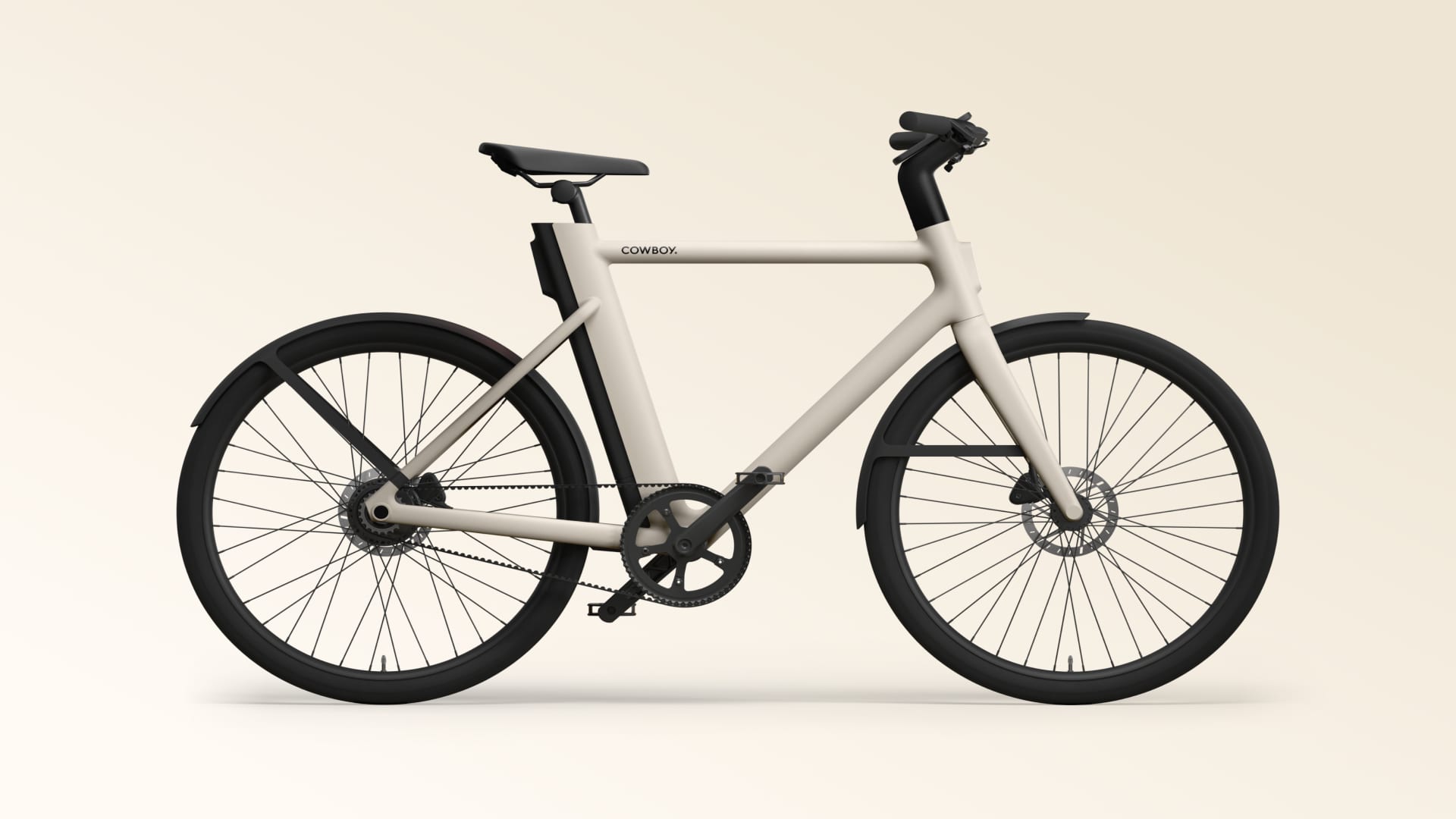
The Cowboy Cruiser.
Cowboy
Cowboy, the Belgian electric bike maker, is expecting to hit full-year profitability in 2024 even as some of its market rivals are facing financial hardship.
Adrien Roose, Cowboy’s CEO and co-founder, told CNBC that he expects the company to reach profitability on an EBITDA basis by the end of the second quarter and then sustain this through the third quarter. EBITDA refers to earnings before interest, taxes, depreciation and amortization.
By the third quarter, Cowboy would then have reached profitability on a full-year basis, according to the firm’s boss.
“There is some seasonality in this business,” Roose said in an interview. “Essentially, people like buying a lot of bikes in the summer, and not nearly as much in the winter.”
However, he added, “We have a high degree of confidence that, by 2024, we’ll be EBITDA profitable and cash flow positive on a full-year basis.”
EBITDA is a traditional measure of profitability for many technology companies.
Cowboy is a startup that designs electric bikes. It’s been termed the “Apple of e-bikes” in the past due to its integration of software smarts in its bikes.
Cowboy links its bikes with an app that allows users to lock them when they’re not in use, track their location, predict battery depletion and get weather updates.
Cowboy also serves as the designer of the bikes rather than the manufacturer — it gets other firms to handle the making of its bikes, similar to how Apple relies on contract manufacturers like Foxconn to make its iPhones.
Tough times for the e-bike industry
But e-bikes have had a rough time in the market lately.
A shift in supply chain dynamics has led to a situation where e-bike stock levels are now in abundance at many manufacturers but demand has fallen significantly from the pandemic boom.
That’s different to when e-bike firms were scrambling for more units in 2021 when consumers were itching for alternative, sustainable modes of transport and a way to get outside during the Covid lockdowns.
In that period, customers were often faced with huge delays to their orders as companies couldn’t keep up.
“By the time that this traffic jam started normalizing, the world was already shifting to get in quite a different place,” Roose said. “Towards 2022 and 2023, there was an overall slowdown in demand.”
“This created the perfect storm for companies which have massively over-ordered and now are facing demand that is slightly lower than hoped so or expected, and that translated immediately to very high inventory levels, a lack of cash, and a lack of liquidity.”
The e-bike industry has been plagued by recent bankruptcies of major players in the space. In July, Dutch e-bike firm VanMoof filed for protection from creditors. Administrators overseeing the bankruptcy process are exploring a number of options for VanMoof, including a potential asset sale to a third party so it can continue operations.
Revonte, a Finnish e-bike firm, also filed for bankruptcy and said it is selling its intellectual property.
Roose said that his firm is unlike competitors in that it doesn’t manufacture bikes itself and therefore has a slimmer cost line.
With some competing e-bike firms, “their cost base was way too high for their size,” Roose said, adding that VanMoof operated with far more employees than Cowboy despite boasting similar rates of revenue.
Long-term outlook
Cowboy launched its new Cruiser e-bike with an upright seating position — known as the “Dutch” riding position — earlier this year.
The bike is intended to provide riders with “improved posture and increased visibility on the road,” according to the firm.
But at an “introductory” price of $3,490, Cowboy’s e-bikes don’t come cheap. And on Aug. 1, the company raised prices of its belt-driven “Performance” configuration bikes to $3,790 from $3,490.
E-bike firms have had to get more aggressive on pricing as the tide of venture capital that buoyed the industry in 2020 and 2021 has seeped out of the market with interest rates climbing higher.

Still, though, Roose said he’s keeping his eye squarely focused on the long-term potential of e-bikes — driving sustainability with less cars on the street — rather than the short-term market outlook.
“The demand for e-bikes in general is really strong and it’s been growing year-on-year,” Roose said. “In 2023, there’s been a bit of a slowdown, but the mid to long-term demand for micro mobility in general is as strong as it’s ever been and we’re super bullish.”
Revenues have risen by 38% year-over-year for Cowboy’s best-selling models, while its operating costs have fallen 19% year-to-date.
Roose said the company has also increased its margin to 40% — no mean feat for a hardware company — and has reduced its losses by 83% this year.
The company secured 13 million euros ($14.1 million) in additional funding from its existing institutional backers and crowdfunding investors in April.
The e-bike market is expected to reach $119.7 billion by 2030 at a compound annual growth rate of 15.6% from 2023, fueled by rising prices of crude oil and a move toward economical and environmentally friendly modes of transport, according to Fortune Business Insights.












